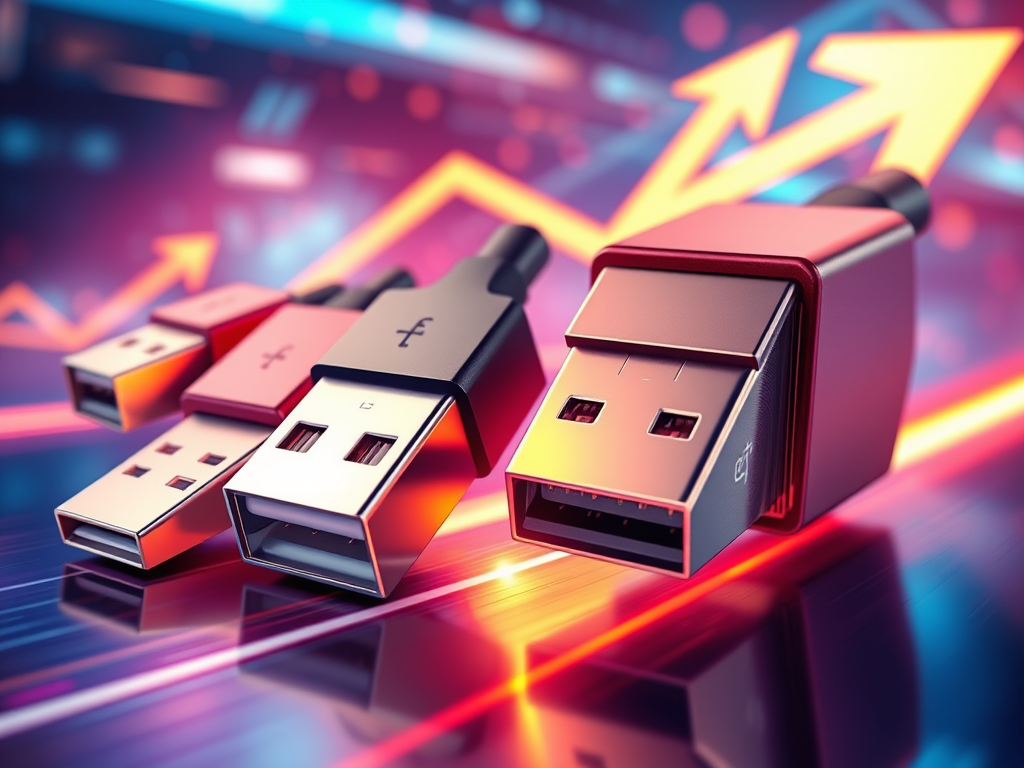Universal Serial Bus (USB) technology has evolved significantly since its inception, leading to various standards that dictate the speed and efficiency of data transfer. Below is an overview of the primary USB standards and their corresponding transfer speeds:
USB Standards and Their Speeds
- USB 1.1
- Speed: Up to 1.5 Mbps (Low Speed) / 12 Mbps (Full Speed)
- Overview: This was the first widely adopted USB standard, primarily used for peripherals like keyboards and mice.
- USB 2.0
- Speed: Up to 480 Mbps (High Speed)
- Overview: Introduced in 2000, USB 2.0 offered significantly improved data transfer rates, making it suitable for a wider range of devices, such as flash drives and external hard drives.
- USB 3.0
- Speed: Up to 5 Gbps (SuperSpeed)
- Overview: Launched in 2008, USB 3.0 introduced a new connector design and greatly enhanced performance. It provides faster data transfer and improved power management.
- USB 3.1
- Speed: Up to 10 Gbps (SuperSpeed+)
- Overview: Released in 2013, this standard doubled the bandwidth of USB 3.0, further enhancing performance and reducing latency.
- USB 3.2
- Speed: Up to 20 Gbps (SuperSpeed++)
- Overview: USB 3.2, introduced in 2017, allowed for dual-lane operation, effectively doubling the maximum data transfer rate when using compatible cables and devices.
- USB4
- Speed: Up to 40 Gbps
- Overview: Introduced in 2019, USB4 integrates Thunderbolt 3 support and offers even greater speeds and versatility through improved data management and resource allocation.
Factors Affecting Data Transfer Speed
- Cable Quality: The type and condition of the USB cable can significantly impact transfer speeds.
- Device Compatibility: Both the sending and receiving devices need to support the same USB standard for optimal performance.
- Data Type: The nature of the files being transferred can influence speeds. Larger files may take longer to transfer than smaller ones.
Conclusion
Understanding USB data transfer speeds is crucial for optimizing device performance and ensuring efficient data exchange. As technology continues to evolve, using the appropriate USB standard can make a significant difference in your digital experience.



Leave a Reply